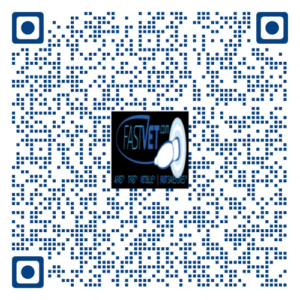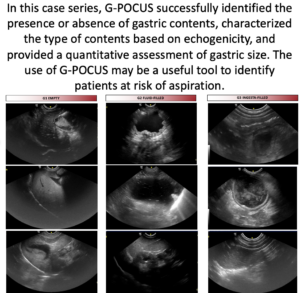Authors:
1Nobles IJ, Oklahoma Veterinary Specialists, Tulsa, Oklahoma, USA 74137
2Johnson CB, Oklahoma Veterinary Specialists, Tulsa, Oklahoma, USA 74137
3Hodges SC, Oklahoma Veterinary Specialists, Tulsa, Oklahoma, USA 74137
4Lisciandro GR, Hill Country Veterinary Specialists, Spicewood, Texas, USA 78669
Title: Gastric POCUS (G-POCUS) Protocol for the Evaluation of Gastric Size and Contents in Dogs
Introduction: The use of point-of-care ultrasound (POCUS) is becoming commonplace in the emergency and critical care settings. More recent POCUS attention in people has been to evaluate gastric size and contents for ileus, triggering interventions to prevent aspiration pneumonia, and for ensuring the patient has been NPO for surgical procedures. Vet BLUE® has been shown to be able to detect the presence of aspiration pneumonia by the findings of B-lines and signs of consolidation, i.e., shred sign, in gravity dependent cranial and middle lung regions. The objectives of this study were to describe a gastric POCUS (G-POCUS) applied during AFAST® to characterize gastric size and gastric contents and screen for any correlations that may be present between G-POCUS and the presence of aspiration pneumonia and gastrointestinal obstruction.
Methods: Sixteen client owned dogs that presented for vomiting and regurgitation were evaluated at a multispecialty private practice. All had AFAST®, TFAST® and Vet BLUE® imaging performed plus our G-POCUS protocol applied at the diaphragmatico-hepatic (DH) and spleno-renal (SR)views and its HR5th bonus view. Gastric contents were characterized as empty, fluid filled, ingesta filled, and foreign material. Gastric size was obtained by measuring the maximal length (l) and height (h) of the gastric antrum in a sagittal plane and maximal width (w) in a transverse plane. Aspiration pneumonia was defined as B-lines and/or shred sign on the gravity dependent cranial and middle lung regions of Vet BLUE®. Correlation between G-POCUS, AFAST® and Vet BLUE® findings were statistically evaluated.
Results: G-POCUS characterization at the G1 view was as follows: 6 of 16 (37.5%) were empty; 6 of 16 (37.5%) were fluid-filled; 3 of 16 (18.8%) were ingesta-filled; 2 of 16 had foreign material (12.5%). Two cases were found to have aspiration pneumonia (2/16; 12.5%) that was interestingly clinically silent. Both dogs had radiographic confirmation of their Vet BLUE®diagnosis. Gastrointestinal foreign bodies were successfully identified and taken to surgery in three out of sixteen cases. Only one dog had free fluid on AFAST® and was scored as 1 at the SR view; and no dogs had pleural or pericardial effusion on TFAST®.
Conclusion: The use of G-POCUS during AFAST® should be further explored with larger case numbers as to its clinical utility for determining NPO, and gastric contents and their relationship to aspiration pneumonia risk, and ability to detect gastric foreign bodies, and gastrointestinal obstruction.






